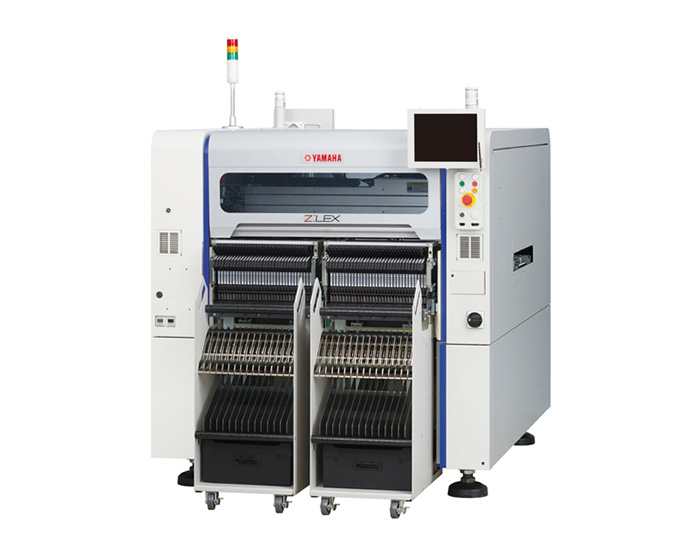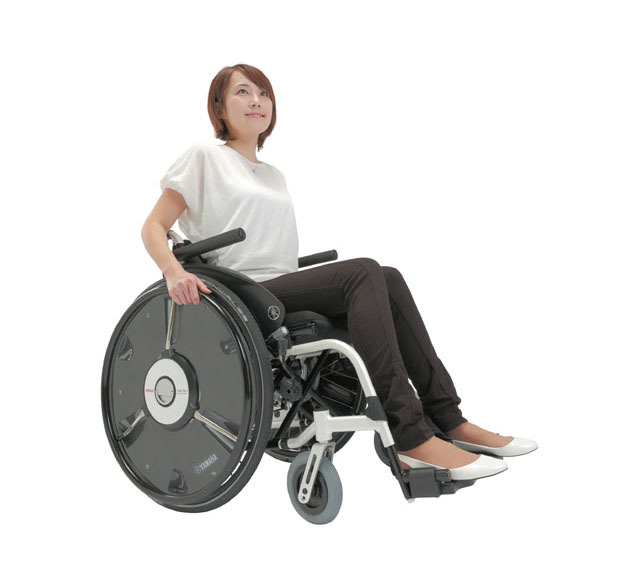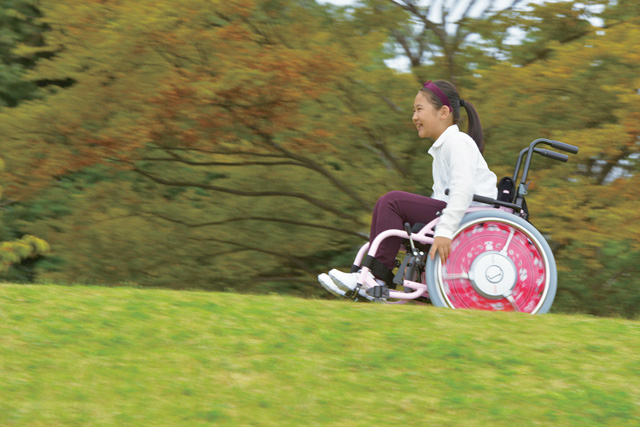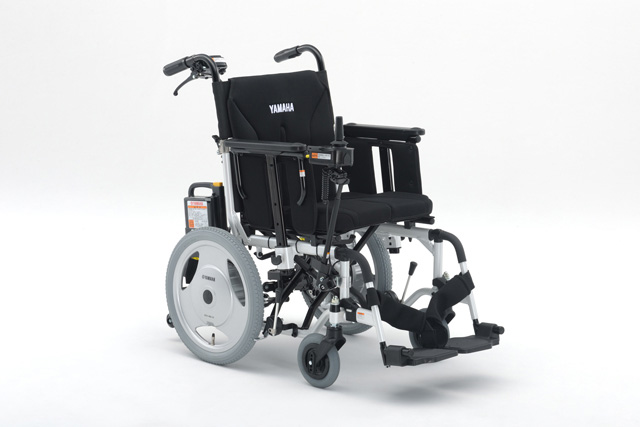From Surface Mounters to Electric Wheelchairs
Introducing the stories behind Yamaha Motor's technologies.

It all started in Tokyo in 1983. It was the first time that Yamaha Motor had joined the International Robot Exhibition as an exhibitor with a booth of its own, and it was there that one manufacturer asked if Yamaha would consider making a device to mount chips on printed circuit boards. From that request, Yamaha established and has maintained a section within the company (presently the Intelligent Machinery Business Unit) that builds “surface mounters” for mounting electric/electronic parts on printed circuit boards as well as the peripheral machinery. To this day, the section continues to address the needs of clients in the electronics industry to keep their production lines in Japan and overseas working 24 hours a day, 365 days a year. The knowhow in the field of electronic control that Yamaha has garnered from this business has been implemented in the development of new Yamaha products, like modifying and adapting the PAS units of our electrically power-assisted bicycles for use on our JW Series of electric wheelchairs. In this way it has become a constantly expanding field of technology.
As a company initially founded as a manufacturer of motorcycles, Yamaha Motor began research and development into industrial robots in 1974 with the aim of increasing precision in manufacturing and assembly processes. Two years later in 1976, the first Yamaha-developed robots for part assembly were put to work on our production lines. This achievement led to the establishment of our industrial robot business in 1981, and two years later, the products of this new endeavor were shown for the first time at the aforementioned International Robot Exhibition. The core technology attained from developing those first industrial robots was what enabled Yamaha to expand to the development of surface mounters for attaching chips and other electrical parts to printed circuit boards.
Put into very simple terms, the process of manufacturing printed circuit boards can be likened to making and baking a pizza. You spread the sauce on the pizza dough, put on the toppings and then bake it in an oven. A surface mounter is a machine that “puts the toppings on the pizza.” However, a surface mounter has to be able to place components on the circuit board at very high speeds (tens of milliseconds) and with incredible precision (tens of microns). The core control technologies needed to achieve that type of performance are “vision-control image processing technology” and “servomotor control technology.”
Vision-control image processing consists of taking super-high-speed images of component placement with a digital camera, and then processing the images to determine the type of part, and inspect the accuracy of its placement (positioning) and if it is properly attached to the board. This means verifying high-accuracy part placement at micron increments in just a few milliseconds. Going back to the pizza analogy, it is the role of determining whether the various toppings have been placed in the desired position on the pie.
Servomotor control technology in the surface mounter technology (SMT) context means having the degree of control to pick up a chip smaller than a sesame seed (in the range of 0.2 mm × 0.1 mm) and place it in the determined spot on the circuit board with a high level of positioning precision. A suction nozzle is used to pick up the chip, and then a number of servomotors are employed to transport and place the chip over a 3D course in seamless coordination with virtually no time lag. The important point in this complex action is how to coordinate the operations of the nozzle and the servomotors so that they function simultaneously. The latest electronic controllers are capable of coordinating motors operating in close to 100 different axes of motion in less than one millisecond. Yamaha’s leading surface mounter product, the “Z:LEX YSM20,” (#1) is capable of mounting 90,000 chips per hour. All of the digital cameras, controllers and other core technologies for our main mounter products have been developed in-house.
Expanding the Roles of Yamaha Electronic Control Technology
Some examples of products born from the control technology in Yamaha surface mounters are the JW Swing (#2) complete built up (CBU) electrically power-assisted wheelchair and the JWX-2 attachable power-assist unit for wheelchairs. Using technology from Yamaha’s PAS electrically power-assisted bicycles, these power-assisted wheelchair products respond to force applied by the user to the main wheel hand rims to apply a corresponding drive force from an electric motor to help propel the wheelchair. However, while bicycles have a single drive wheel, wheelchairs have two separate drive wheels. This difference brings in the need to coordinate the movement of the two wheels. Also, unlike a bicycle where the feet of the rider are always on the pedals, moving a wheelchair forward involves an interval when the hands must leave the rims at the end of a push to reset the user’s grip for the next push. There is also a difference in the amount of force applied and timing of the pushes on the left and right hand rims to maneuver the wheelchair. As a result, smooth movement cannot be achieved simply by applying the assist force as it is. So, Yamaha developed a sophisticated method of control to coordinate the assists and make the wheelchair move naturally. The assist force is programmed to make a smooth transition when the user’s hands leave the rims to re-grip for the next push and to enable smooth motion going up or down hills. The intricate details of this control draw on the servomotor technology attained from Yamaha’s development of industrial machinery.
The Yamaha electric wheelchair lineup is also popular for its fully electric-powered models operated with a joystick (#3), but power-assisted models like the JW Swing are aimed at helping older users who may have become weaker with age to maintain and increase the muscular strength they have. The “JW” in the product name stands for “Joy Wheel” and it is a direct expression of the Yamaha developers’ desire to see the products’ users experience the joy of using their own strength to get out and enjoy the freedom of self-mobility.



